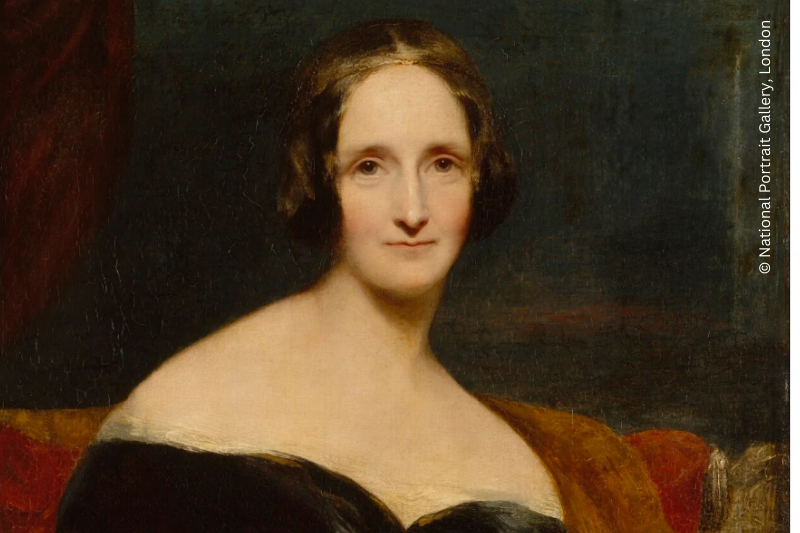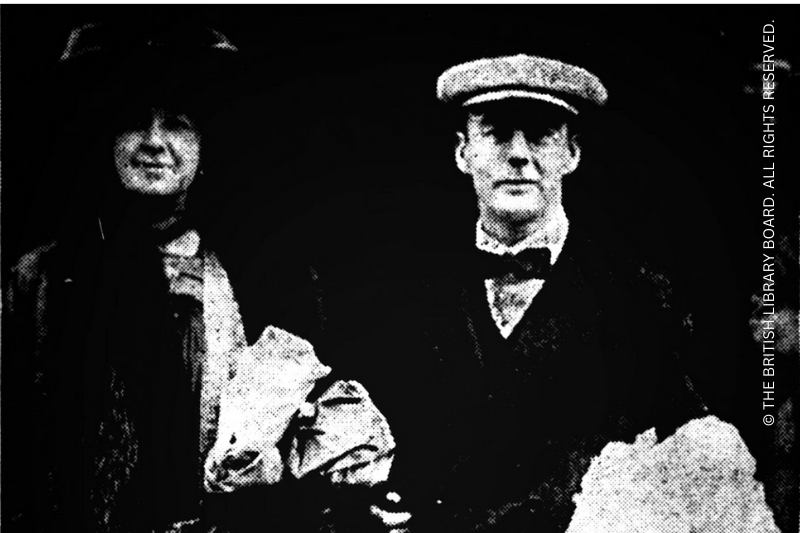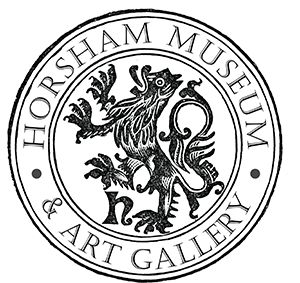
Like so many museums across the country, there are many more records and artefacts related to the men of Horsham’s history than the women who lived here. Today, on International Women’s Day we highlight the story of two great women with links to the town.
Mary Shelly
The Romantic poet Percy Bysshe Shelley was born at Field Place Warnham (on the outskirts of Horsham) in 1792, but today we want to highlight the story of his second wife Mary Wollstonecraft Godwin. Mary was the author of the iconic gothic novel Frankenstein; or, The Modern Prometheus (published 1818) and in 1844 inherited Field Place alongside her and Percy Bysshe’s son, Percy Florence, following the death of her father in law Sir Timothy Shelley (her husband, Percy Bysshe Shelley did not inherit as he had drowned off the coast of Italy in 1822). Mary and Percy Florence Shelley stayed at the property occasionally, but by 1850 it was rented out. Coth of their names appeared on documents relating to Field Place at that time and one such document, featuring Mary Shelley’s signature can be seen in the Shelley gallery at the museum.
Mary Shelley’s mother, Mary Wollstonecraft wrote A Vindication of the Rights of Women (1792) which is considered to be the first treatise to advocate for the rights of women. Unfortunately Mary Wollstonecraft died a few day’s after giving birth to Mary, but she would inherit her mother’s independence which in turned helped to shape her future life.

Agnes Helen Harben
Agnes Helen Harben (née Bostock) was born in Horsham in 1879. She is known for her leadership in the women’s rights suffragist movement and fought for these beliefs throughout her lifetime. Her marriage to the then barrister Henry Devenish Harben, saw them advocate the belief that a “Woman’s voice shall be heard in any peace settlement” – as they stated together for a Votes for Women article in 1913.
Although never arrested as a militant Suffragette, Harben supported the Women’s Social and Political Union (WSPU) which called for criminal acts to advance the suffragette movement. Although they avoided activities which could cause direct harm to other people, they smashed windows in offices and shops, cut telephone lines and even slashed a Velázquez painting in the National Gallery. At this time the Harbens lived at Newlands Park in Buckinghamshire and gave over their home as a place for rest and recovery to suffragettes who were recovering as part of the 1913 Cat and Mouse Act. Following arrest for militant suffrage activities many suffragettes went on hunger strike in prison. The Cat and Mouse Act ensured that hunger striking suffragettes were released from prison when they became so weak that their lives were at risk. Although they would be released and cared for by people like the Harbens, the act decreed that as soon as they were sufficiently well again, they would be brought back to prison to continue their sentence.
Check out the museum's 20th Century gallery to see on display a 1911 WSPU plaque that quotes "Votes For Women" on a glass.
Published: 08 Mar 2024
